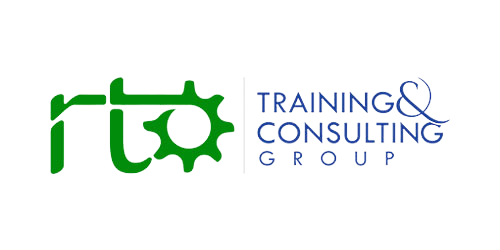Why We Slide Into “Boss Mode” When Life Gets Busy
When responsibilities pile up, it’s natural to grip the wheel tighter. Micromanaging can feel like the only way to protect quality, hit deadlines, and keep family life ticking. But the short-term calm of control usually breeds long-term costs: slower teams, stifled initiative, brittle relationships, and your own exhaustion. Organisational psychology has been clear for decades—people do their best work when they feel trusted, supported, and connected to a meaningful purpose. In families, the same dynamic shows up as cooperation, resilience, and a calmer home when adults model trust and invite contribution rather than command compliance.
Boss vs Leader: The Real Difference
A boss relies on authority to enforce tasks and timelines. The emphasis is on compliance, inspection, and correction. It can produce fast, visible activity, but it drains intrinsic motivation, encourages “minimum viable effort,” and discourages creativity. A leader relies on influence built through clarity of purpose, empathy, and shared standards. The emphasis is on outcomes, development, and autonomy with support. People lean in because they understand the goal, feel safe to try, and know their contribution matters. In both contexts—office or kitchen table—the leader’s signal is consistent: “I trust you. Here’s where we’re going. Let’s figure out how you’ll get there—and how I can help.”
The Mindset Shift That Changes Everything
Control feels efficient, but it is a bottleneck. Leadership scales. The mindset shift is moving from “How do I get this done perfectly?” to “How do we get this done consistently without me being the limiter?” That means raising your horizon from tasks to systems. Systems carry your standards when you’re not in the room. At work, that’s role clarity, simple rituals, and visible metrics. At home, it’s clear routines, shared responsibilities, and predictable follow-through. In both places, your job is to design the environment, not to do what everyone else is doing.
Clarity First: Paint the Picture of Done
People rarely resist the destination; they resist uncertainty. Replace step-by-step micromanagement with a crisp description of the outcome. Explain why it matters, what “good” looks like, the non-negotiables, and where judgment calls belong. At work, that might sound like, “We’re aiming for a client-ready draft by Thursday, 3 pm, that answers the brief, includes three options with pros/cons, and is written for a non-technical reader. I’ll own final sign-off; you own structure and recommendations.” At home, it might be, “Dinner is your project tonight. We need something balanced, ready by 6:30, and a clean kitchen afterwards. Choose the menu; ask for help if timing slips.”
Trust With Guardrails: Delegation That Sticks
Delegation is not a dump of tasks; it’s the transfer of an outcome with support and constraints. Start by matching the task to the person’s current capability plus a small stretch. Agree on checkpoints that are about learning and de-risking, not surveillance. Offer resources, context, and access to you for blockers. Then step back. If you keep grabbing the wheel, you teach people that ownership is an illusion. If you hold steady—while being reliably available—you teach confidence and accountability.
Feedback That Builds Skill, Not Fear
Great leaders give feedback that is timely, specific, and tied to the purpose. Replace vague judgments (“This isn’t good enough”) with clear comparisons to the target (“This section doesn’t answer the client’s question about cost; let’s add a simple table and a one-sentence summary”). Separate coaching from evaluation whenever you can, so people feel safe to ask for help before the stakes are high. In families, praise effort, strategy, and teamwork (“You planned your homework and stuck to the plan—that’s why you finished early”), not just outcomes.
Autonomy With Visibility: Make Work Observable
Autonomy does not mean invisibility. Create simple ways to make progress visible without constant check-ins. Short written updates, kanban boards, or end-of-day summaries keep teams aligned and reduce anxiety on both sides. At home, a shared calendar and a visible task board stop reminders from becoming nagging. Visibility turns “Did you do it?” into “I can see what’s done and where I can help.”
Psychological Safety: The Fuel for Initiative
People contribute ideas and take smart risks when they believe honest mistakes won’t trigger humiliation or punishment. You set that tone by acknowledging your own misses, thanking people for candour, and responding to problems with curiosity before judgment. Say, “Help me understand what got in the way,” before “Why didn’t you…?” Safety isn’t softness; it’s the precondition for high standards because it keeps learning alive under pressure.
Boundaries and Energy: Model the Habits You Want
Leadership is caught more than it is taught. If you answer emails at midnight, your team will believe that’s the expectation. If you skip breaks and work through illness, your family will think rest is optional. Decide what “healthy high performance” looks like in your context and live it in public: deep-work blocks without meetings, protected family time, device-free dinners, finishing meetings five minutes early so the next begins on time. Your behaviour is the culture.
Conflict as a Design Problem, Not a Character Test
Most recurring conflicts are poorly designed systems wearing human faces. If you keep correcting the same mistakes, the issue is not the person; it’s the process. Fix the upstream cause: unclear ownership, hidden queues, unrealistic deadlines, or missing handovers. In families, recurring arguments about chores often reflect ambiguous roles or invisible labour rather than laziness. Redesign the system so the right thing is the easy thing.
A One-Week Reset to Move From Boss to Leader
Start with Monday by scheduling a 20-minute alignment conversation with your team or household. State the key outcomes for the week, who owns what, and two or three non-negotiables. On Tuesday, redesign one task you usually micromanage into a delegated outcome with a mid-week check-in. On Wednesday, run a short learning review on something that slipped—no blame, just causes and fixes. On Thursday, practise one high-quality coaching conversation: ask open questions, summarise, and co-design next steps. On Friday, celebrate one win publicly and name the behaviours that created it. Over the weekend, agree on a small routine change that will protect energy next week, such as a device-free hour each evening or a shared 30-minute planning block.
Measuring What Matters: Progress, Not Perfection
If you want different behaviour, measure the conditions that create it. At work, track cycle time, rework, unplanned escalations, and the number of decisions made without you. Rising autonomous decisions with steady quality is the most powerful signal that you are leading, not bossing. At home, notice stress levels at key transitions (mornings, homework, bedtime) and the number of reminders required; fewer prompts with similar outcomes equals better systems. Resist the urge to inflate dashboards with vanity metrics. Choose a handful that reflect trust, clarity, and consistency.
When Control Is Necessary—and How to Exit It
Emergencies, safety risks, and critical incidents do require tight control and rapid direction. The leadership skill is knowing how to enter command mode cleanly—and exit it quickly. Signal the shift upfront (“This is time-critical; I’m going to direct for the next hour”), then debrief later to return autonomy and capture lessons. Permanent command mode is organisational long COVID; use it sparingly.
Helping Perfectionists Let Go Without Lowering Standards
Perfectionism often hides a fear of being judged by the work of others. The antidote is raising standards while reducing personal ownership. Define what “excellent” means in observable behaviours and artefacts, not in your private preferences. Build quality into the process (templates, checklists, peer review) so it doesn’t depend on you catching every flaw at the end. Teach your eye for quality to others; the more you coach the standard, the less you need to police it.
Leading Yourself First: The Inner Work
You cannot create calm outside if you are in chaos inside. Leadership requires metronomes: sleep, movement, focused work, recovery, and reflection. Protect a daily window for thinking without input. Use a simple end-of-day review to ask, “Where did I control when I could have coached? What will I delegate differently tomorrow?” Small adjustments compound. Over time, you will feel the shift from frantic heroics to durable, steady influence.
Bringing It Home: Leadership in Families
Families are the ultimate teams without HR departments. The same principles apply. Share a simple family vision for the week ahead. Delegate outcomes, not errands. Make contributions visible. Hold short, regular check-ins. Encourage kids to propose solutions to their own problems and praise the process, not just the result. When you slip into barking orders—as everyone does—repair quickly. Name it, apologise, and restate the outcome and support available. Children learn leadership from how we recover, not from our pretence of perfection.
The Payoff: Performance, Wellbeing, and Belonging
Teams and families led through trust and shared purpose move faster with fewer scars. They produce more ideas, catch problems earlier, and stick around longer. Individuals feel seen and stretched, not squeezed. And you reclaim the one resource you cannot buy back: attention. When you stop carrying what others can carry, you can finally do the work only you can do—setting direction, removing blockers, developing people, and being present where it matters.
Closing the Gap Between Intention and Impact
Most of us already believe in empowering others; we simply default to control under stress. The way forward is not grand speeches but small, repeated choices: clarify the outcome, delegate the result, coach instead of correct, make work visible, and celebrate progress. Do this for a week, and you will feel the air change. Do it for a quarter, and you will have a different team and a different home. The choice is not between being a boss or a pushover. The choice is between control that shrinks people and leadership that grows them—including you.


































